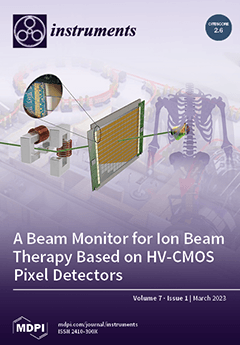Open AccessArticle
A Beam Monitor for Ion Beam Therapy Based on HV-CMOS Pixel Detectors
by
Alexander Dierlamm, Matthias Balzer, Felix Ehrler, Ulrich Husemann, Roland Koppenhöfer, Ivan Perić, Martin Pittermann, Bogdan Topko, Alena Weber, Stephan Brons, Jürgen Debus, Nicole Grau, Thomas Hansmann, Oliver Jäkel, Sebastian Klüter and Jakob Naumann
Cited by 2 | Viewed by 2268
Abstract
Particle therapy is a well established clinical treatment of tumors. More than one hundred particle therapy centers are in operation world-wide. The advantage of using hadrons like protons or carbon ions as particles for tumor irradiation is the distinct peak in the depth-dependent
[...] Read more.
Particle therapy is a well established clinical treatment of tumors. More than one hundred particle therapy centers are in operation world-wide. The advantage of using hadrons like protons or carbon ions as particles for tumor irradiation is the distinct peak in the depth-dependent energy deposition, which can be exploited to accurately deposit doses in the tumor cells. To guarantee this, high accuracy in monitoring and control of the particle beam is of the utmost importance. Before the particle beam enters the patient, it traverses a monitoring system which has to give fast feedback to the beam control system on position and dose rate of the beam while minimally interacting with the beam. The multi-wire chambers mostly used as beam position monitors have their limitations when a fast response time is required (drift time). Future developments such as MRI-guided ion beam therapy pose additional challenges for the beam monitoring system, such as tolerance of magnetic fields and acoustic noise (vibrations). Solid-state detectors promise to overcome these limitations and the higher resolution they offer can create additional benefits. This article presents the evaluation of an HV-CMOS detector for beam monitoring, provides results from feasibility studies in a therapeutic beam, and summarizes the concepts towards the final large-scale assembly and readout system.
Full article
►▼
Show Figures




